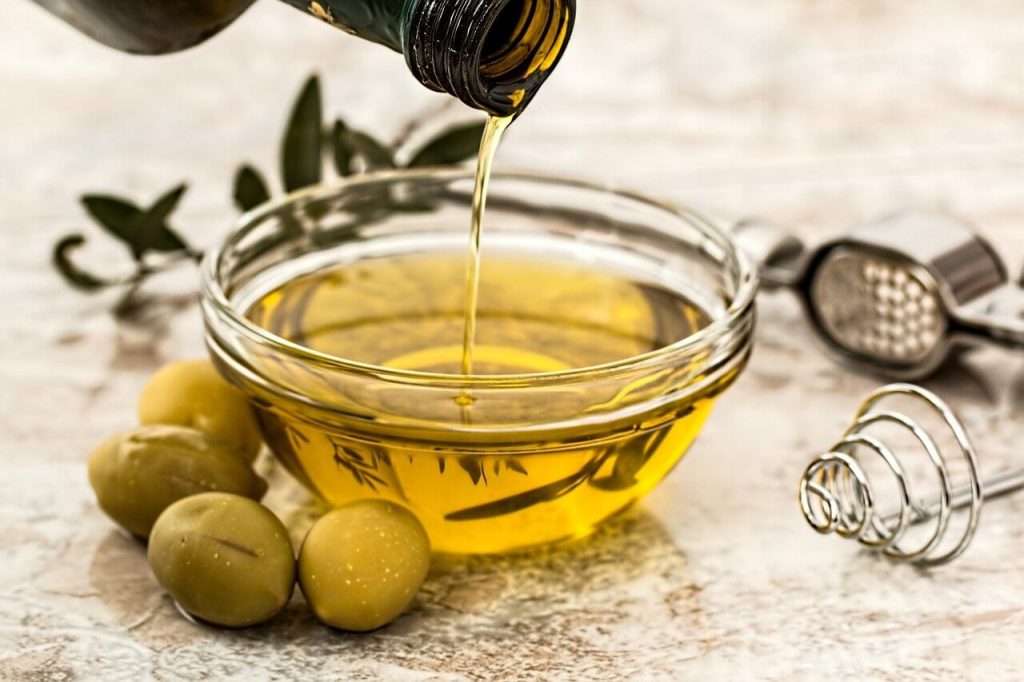Steak is one of the most popular dishes among all age groups and is one of the least cooked foods at home.
Have you ever wondered why?
Well, the more popular it is, the more difficult it seems to be to prepare at home. Cooking steak is an art, and not everyone can get it right, regardless of how you cook it.
Whether it is cooked on the grill or prepared in the oven, you need to have the best knowledge starting from the marinade to the cooking oil.
Oil is used in different stages of cooking steak; some people use oil in the marinade, which helps enhance the flavor of the steak and helps keep its moisture, while others cook steak in oil for the same reason.
There are other advantages to using oil for cooking steak, such as it does not let the steak stick to the pan.
In this post, I will guide you through the different types of oils being used for cooking steaks, the preferred quantity of oil, and oil alternatives for cooking steaks.
I will also go through how much oil to use when cooking steak and if you can make steak without oil or not.
Contents
- 1 What Characteristics Of Oil To Look For When Cooking Steak
- 2 What Are The Best Oils For Cooking Steak?
- 3 What Oils Should Not Be Used For Cooking Steak
- 4 What Quantity Of Oil To Use When Cooking Steak
- 5 Oil Alternatives For Cooking Steak
- 6 How To Cook Steak Without Oil
- 7 Final Thoughts
- 8 Other Popular Posts
What Characteristics Of Oil To Look For When Cooking Steak
When you choose which oil to use for making steak, several factors need to be considered, some of which are:
Smoke Point
Regardless of the method of cooking steak, the smoke point is the topmost factor to be considered.
Oils with low smoke points will quickly burn, which affects the steak’s flavor, but it will also make the steak stick to the pan.
Additionally, your kitchen will also be filled with smoke, and cleaning pans would be harder than ever.
For cooking steak, it is recommended to go for oil with a smoke point above 450 degrees F.
Oils like plant oils, nut oils, seed oils, and extra light olive oil all have a smoke point above 450 degrees and are therefore the best choices for preparing steaks.
Ingredients
Just like any other dish, oil ingredients make a huge difference when it comes to making steaks. It is suggested to always use pure oils primarily due to three reasons:
1) Oils that have added ingredients or that are processed are negatively affected by high smoke points.
2) Ingredients play a vital role in enhancing the flavor of the steak.
3) Pure oils are proven to give numerous health benefits.
So, if you have pure and natural oil choices, why would you ever want to use processed one.
Variety
Some oils work well only with certain styles of cooking, and they tend to be problematic in other cooking styles, which is why it is recommended to go for oil that works best with every method of cooking steak, whether it is grilling, frying, or searing the steak.
What Are The Best Oils For Cooking Steak?
The choice of oil for cooking steak is highly dependent on the way you would cook it.
However, it is recommended to use only pure oil, which does not have any additives.
Additionally, the oil used for cooking steak should have a high smoke point by the cooking method.
The oils considered best for cooking steak are grapeseed oil, peanut oil, canola oil, and extra light olive oil.
Grapeseed Oil
Grapeseed oil gives the liberty to use all types of cooking techniques for preparing steaks.
It can be used on high heat without any fear of burning oil owing to its high smoke point. Grapeseed oil can be used for frying steak or baking steak or even grilling.
It is rich in many beneficial ingredients such as Omega-7 and fatty acids.
One of the most important characteristics of grapeseed oil is that it is gluten-free, so it can be safely used by those who are allergic to gluten.
Additionally, it is GMO-free and does not contain any harmful ingredients.
Peanut Oil
Peanut oil, also referred to as groundnut oil or Arachis oil, has a high enough smoke point, i.e, 450 degrees F, for searing steak perfectly.
Peanut oil is considered to be rich in flavors. However, some types of peanut oil have extremely pronounced flavor, which can overtake the natural taste of the steak.
Please note that the flavor of peanut oils depends upon the processing and may vary from soft and sugary to strong and nutty.
Extra Light Olive Oil
Grilling is the most common method used to cook steaks, and grills are likely to get pretty hot very quickly.
Therefore, only extra light olive is advised to be used for making steaks due to its high smoke point among all other types of olive oil.
It is equally great for frying or baking steak. It does not have any additives and there no Trans fats or cholesterol either in extra light olive oil.
However, one of the downsides of extra light olive oil is that it an expensive option and will affect your budget.
Canola Oil
Canola oil is another good option for cooking due to its high smoke point of 400 degrees F.
Like olive oil, it does not have any tans fats and is absolutely cholesterol-free. Canola oil is famous for its abundance of Omega-3 present in it.
The only drawback of this oil is that it does not have any flavor, so you would need seasoning to get the desired flavors from steak.
It is comparatively much cheaper than extra light olive oil, making it an ideal choice for cooking steak.
What Oils Should Not Be Used For Cooking Steak
When it comes to cooking steaks, the smoke point is critical as you would not want your steak to be covered with the smell of burnt oil.
The oils with the lowest smoke points are olive oil, extra virgin olive oil, and traditional olive oil, all of which have smoke points less than 350 degrees F and are best avoided for cooking steak.
What Quantity Of Oil To Use When Cooking Steak
While cooking steak, oil can be beneficial for several reasons, such as seasoning, but only a small quantity would do the work.
I typically use around a teaspoon of oil or less and ensure that the whole pan is covered whilst doing so.
This ensures that your steak doesn’t stick to the pan and the heat can conduct through the pan and cook the steak evenly throughout.
A great tip is to ensure that you pour the oil directly onto your steak and rub it in gently, this means you can use less oil and still get maximum effect.
You don’t need to use a lot of oil when cooking steak, and if your watching the calories then try to use as little as possible.
Thick and fatty steak pieces of meat are already rich in animal fat, which can be a great substitute for oil, and the oil from meat would keep the steak from sticking to the pan and add tremendous flavor and taste to the steak.
Oil Alternatives For Cooking Steak
Butter
Clarified butter can be used as an alternative to oil for cooking steak.
Plain butter has a shallow smoke point of 300 degrees F which can easily burn at high temperature and ruin the taste of your steak, while clarified butter has a very high smoke point which is 450 degrees F.
Ghee
Ghee, which is often called Indian clarified butter, is also an excellent alternative for cooking steak as it has an incredibly high smoke point of 485 degrees F, making it better than many of the oils.
Additionally, ghee is full of delicious flavors that would complement your steak.
How To Cook Steak Without Oil
Steaks can also be made without using oil, and the most common method used for cooking steak without oil is pan searing.
However, it is highly recommended to use only thin cuts of steak if you are not using oil, as, without oil, the steak might not cook properly from the inside and outside. Some of the other methods for cooking steak without oil are:
Grilling
No oil is required if you grill the steak either over hot coals or gas grill; however, it must be noted that it should be hot enough before putting the steak onto the grill.
A handy tip to avoid steak sticking to the pan is not to turn it over until one side is fully cooked.
Under The Broiler
The broiler can be thought of like a reverse grill. In a traditional grill, the heat comes from the coals under the steak, while in a broiler, the heat comes from above the steak.
Broilers are also very useful, and steaks can be cooked under a broiler without the need for oil.
Oven Roasted
Another great option to cook steak without oil is to sear the steak in a frying pan and then cook it in the oven.
Final Thoughts
I would conclude this post by recommending you use oil when cooking steak as it helps cook the steak evenly both from the inside and the outside.
Also, cooking oils give a great flavor to the steak, which is impossible without seasoning. However, if you are health conscious or suffer from some disease that requires you to stay from oil, you can go for a no-oil steak option.
I hope this post has helped you understand how much oil should be used for cooking steak.

